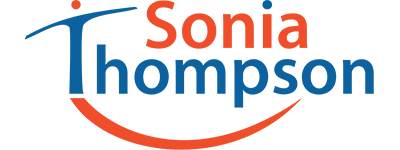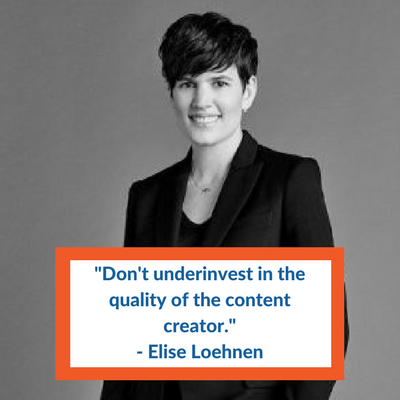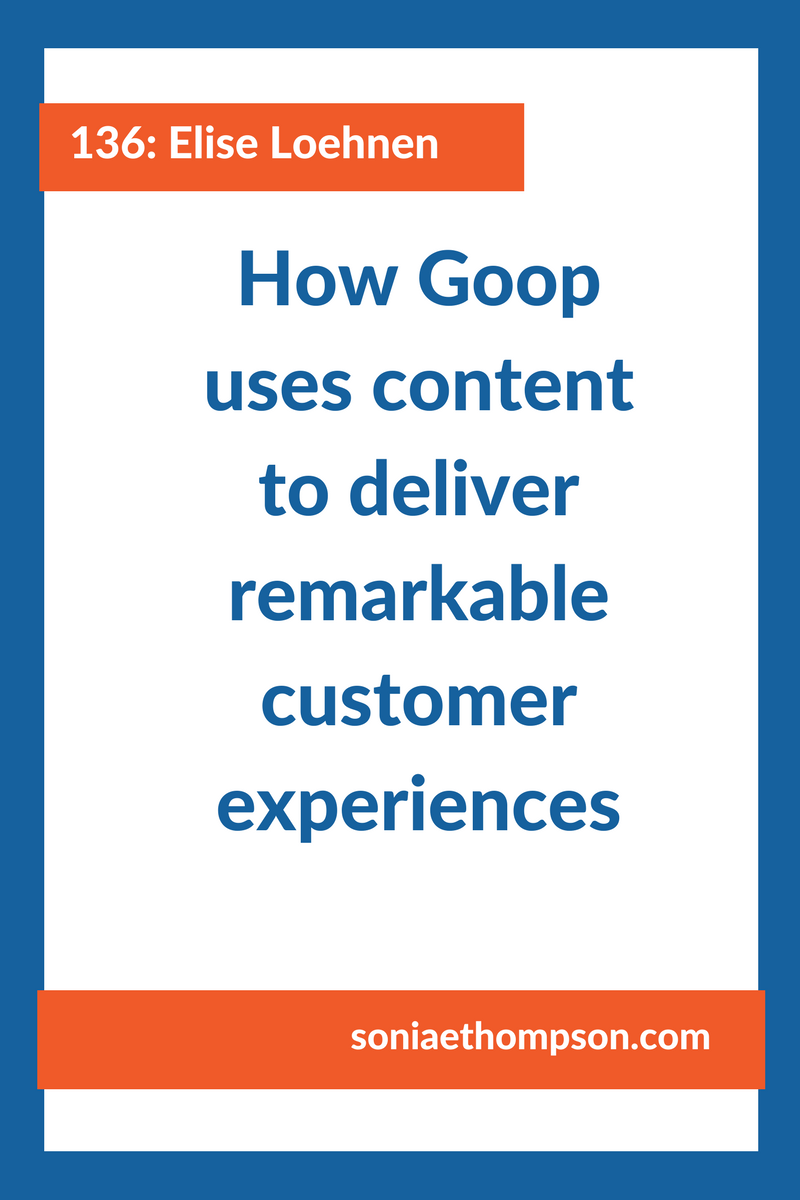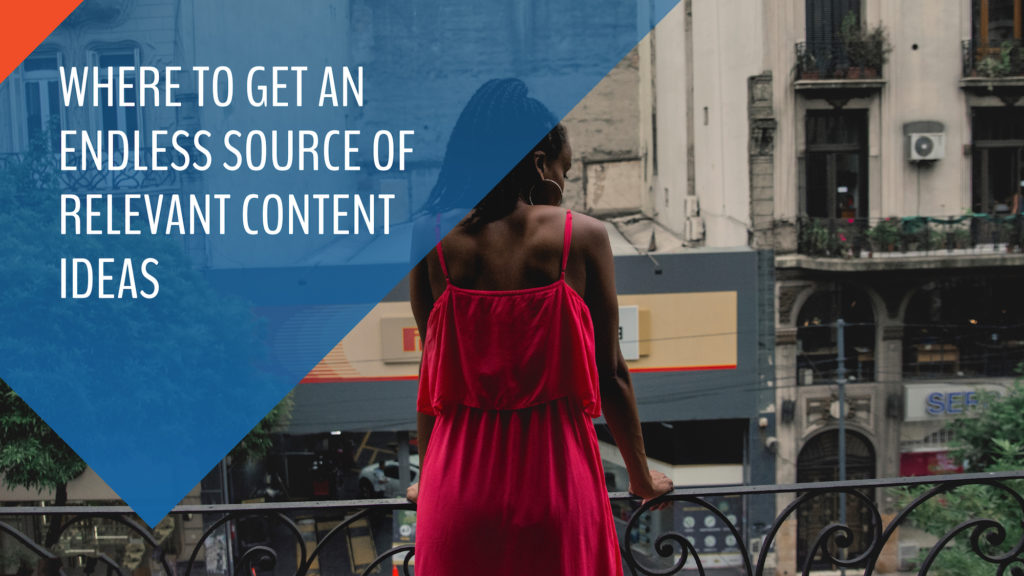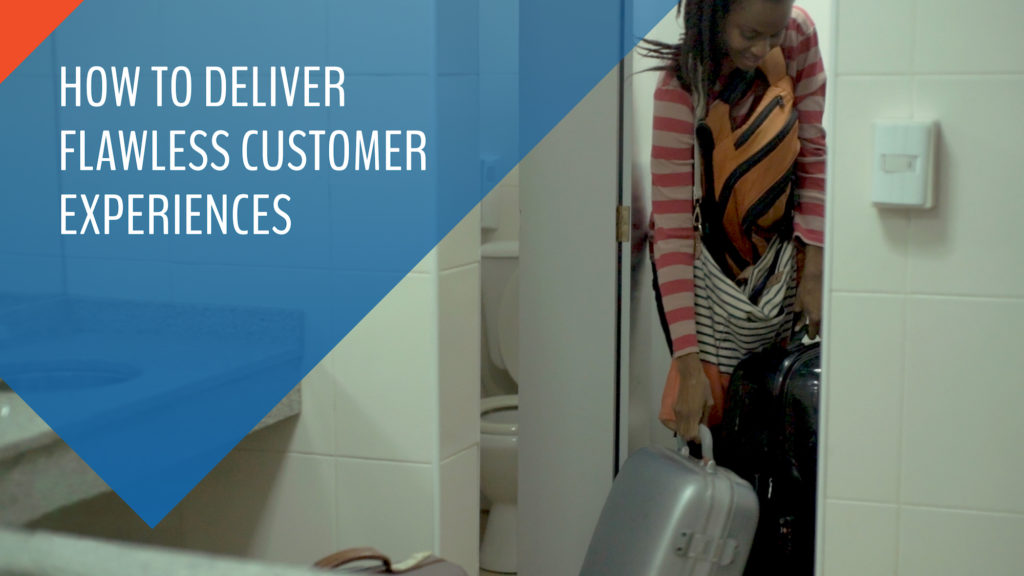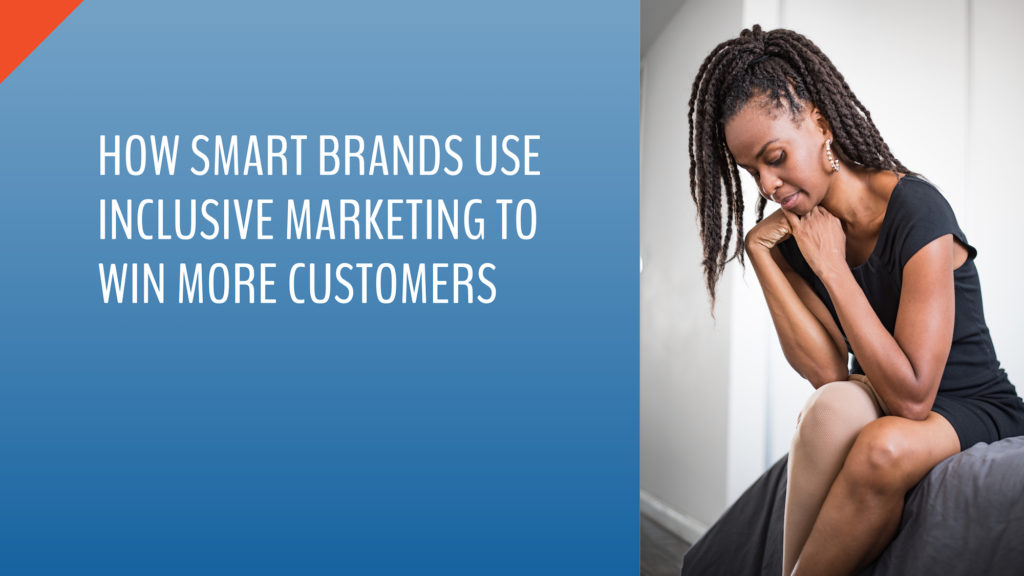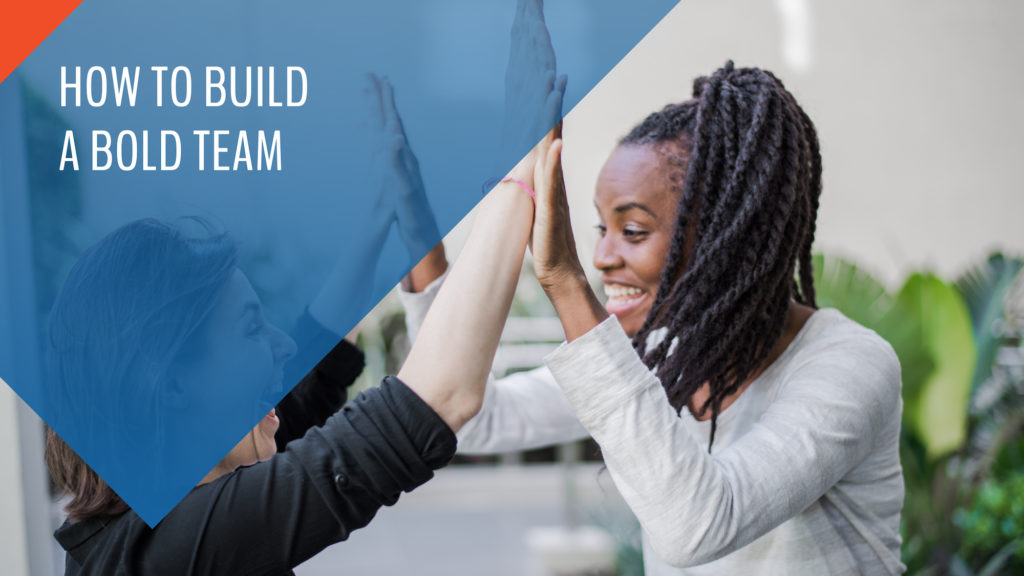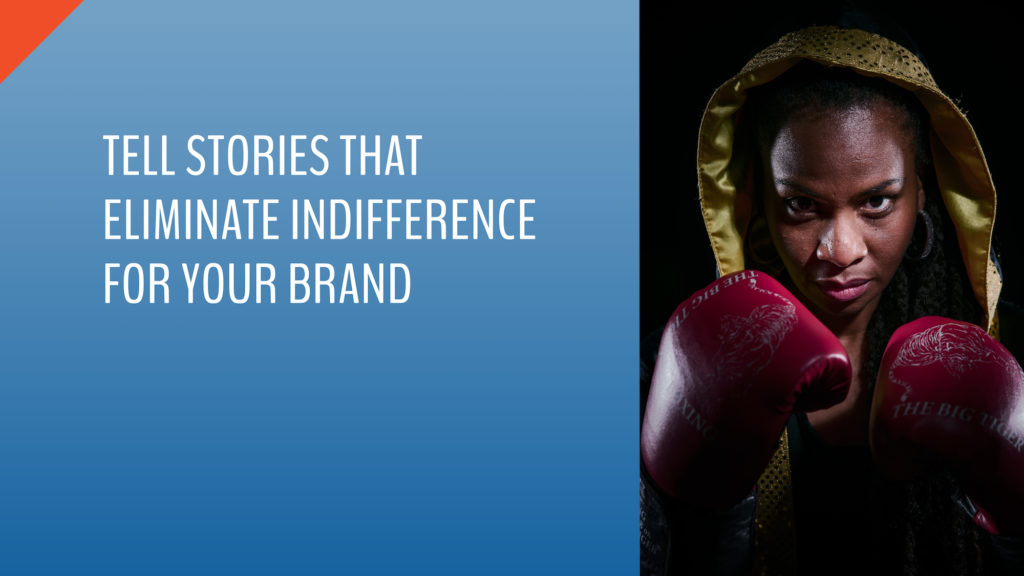Today we are talking about content. Specifically how to strategically use content to not only deliver remarkable experiences for your customers, but to grow your business exponentially in the process.
To dive into this area, I chatted with Elise Loehnen, Chief Content Officer at Goop, a wellness and lifestyle brand started in 2008 by Gwyneth Paltrow.
Through their strategic use of content, the company has grown significantly, even tripling their year-on-year revenue in 2017. They attribute a significant amount of that growth to how they use content.
We can learn a ton from Elise, in particular how you should be thinking about your customers that will enable your content to connect with them at a deeper level.
Key points:
- How to tie the content you produce to the products you sell
- A simple way to use content to draw your customers closer to you
- How to grow your audience organically with the content you produce
- How to build a team that enables you to stay connected with increasingly diverse customers
- How to use live events to deliver remarkable customer experiences
- Smart ways to develop a deeper degree of intimacy with your customers
- The big mistake most businesses make with content creation
Listen to the 26-minute episode here:
Watch the episode here:
Read the transcript here:
How to turn inside knowledge into a remarkable customer experience
Sonia Thompson: Hello Elise. Thank you so much-
Elise Loehnen: Hi.
Sonia: … for joining me today. How are you?
Elise: Good.
Sonia: All right. Well, let’s go ahead and dive right in. Tell me about the company you work for Goop.
Elise: Yes. Where would you like me to start and what would you like to know?
Sonia: Well, let’s go ahead and tell me just overall about the company, what is it that you guys do, who do you serve.
Elise: When it got its start in 2008, it was a very simple newsletter, really only a newsletter. I don’t even think there was a website to archive the content, that Gwyneth started in London with an assistant. It was really sweet, simple sometimes a recipe or two, sometimes an interview with someone, sometimes some travel recommendations.
The premise was that she felt like she had access to all these incredible experts and people and sort of inside information. She just wanted to share it with friends, and then it became a thing. People who weren’t her friends started subscribing. She really kept it just focused on the content for many years. She wasn’t making any money.
Ultimately, she decided that she wanted to do something interesting with product, so she worked on these collaborations with designers that were really kind of interesting. It would either be the perfect white T-shirt or what’s a travel jewelry case that’s chic enough but keeps your necklaces from not getting tangled. So, just sort of identifying these moments of white space and it’s really grown.
She moved from London to Los Angeles which is when I joined. At that point, it was sort of like, “I want to turn this into a … like I want to actually get really serious about this as a business.” We have stayed true to who we are, which is at our heart a content site. Then introduced products to sort of complete the cycle.
If we’re talking about something then it’s like, “Oh and you can form variations of this outfit or here’s how you can go and see this doctor or travel guides that obviously you can just go out and book.” So, we saw some things, some things we obviously just write about. That sort of the genesis for our women. We have some men who love us too, but we’re pretty much for women. Trying to save women time, do the work for them sort of like if you’re … I think for a lot of women who aren’t at least this has been our focus group of one.
When I was in my early 20s I was like, “I’m going to try every food truck. This is what I want to do.” Now, it’s like, “Just tell me which one’s amazing.” So, that’s the work that we try to do. We’re not encyclopedic. We’re not trying to cover everything. We’re just trying to cover the things that we think have the most value.
Sonia: So, what would you say is the specific problem that you saw for the people that you serve? Is it just saving them time on the things that you feel that they most want to know?
Elise: Yeah and I think a lot of what we do is raise awareness around certain issues that we think that women want to know that they might not know. So, one example would be I think our clean beauty selection. So, obviously the last probably five years people have started to … there’s been a lot more publicity around the fact that there is no regulation of the personal care industry. The last piece of legislation was in 1938 that’s one page. The FDA is empowered to regulate the personal care industry. So, there are known carcinogens and endocrine disruptors and products including baby shampoo. So, a lot of women think “You just think they regulate it, right? They regulate everything. Of course, they must be regulating my deodorant,” but they’re not.
So, we’ve done a ton of content about it sort of why these ingredients are problematic potentially. A lot of the carcinogens at this point and then we sell really clean beauty brands on the site. We have a very rigorous ingredient screen. So, we sort of do the work of going out and finding the best nontoxic deodorant for example. We have our own skincare line but it’s just five products within like a much wider store, but the goal there is like you can come to us know that we’ve vetted every single product, both from a safety and an efficacy and performance standpoint. So, just saves you time. You don’t have to sit there and like every single label. You can know that we did the work.
How to use content build deeper relationships with your customers
Sonia: They can trust that you guys have done the work for them which also makes it cool. Why is quarter’s content … excuse me at the cornerstone of what you do and how you connect with your customers that you’re serving?
Elise: Well, I think for one that’s how the brand was started and how we had maintained connections with reader over the years. We still have a ton of people who read who don’t shop which is great. Most of our content is completely free. It’s recipes. It’s travel advice. There’s no need to purchase anything. That’s not the intent.
Our wellness content, for example, is more … we interview really incredible doctors who are seeing really interesting things in their practices. Then you can take that to your own primary care physician. Content really is the context. Everyone wants to understand why this product, why this thing, why this doctor so storytelling is really important. Even if it’s not overt sort of like what’s the story behind the creation of this product, even if it’s just the product caption that is important I think to most women to just to unders- in a nutshell like why this purse, why this pair of shoes.
So, that’s really what we focused on is talking to our readers the way that we would talk to our smartest friends and giving them all the context, all the information that they would need to feel like they’re making a great decision or a great purchase.
Sonia: Got it. Now I like how you associate your readers, your customers, of people that you’re serving as your friends because that’s really changes the relationship of what it is that you’re able to deliver them how you communicate, how you engage.
Now how do you use content to deliver a remarkable experience to your customers or is it just that level of intimacy that helps you do that?
Elise: I think it’s that level of intimacy. I also think that we’re not afraid to ask questions and we certainly pay a lot of attention to things that affect a lot of women profoundly that have been understudied or underexplored, primarily in the wellness space.
Whether we’re pounding our fist about postnatal depletion and the spectrum of postpartum depression and anxiety and how we under support mothers in our culture or we are talking about autoimmune disease and how it affects women 10 to 1 to men. They’re chronic. They’re not well understood. There’s no cure. We turnover a lot of rocks and talk to as many people as we can simply because there’s not a lot of really amazing accessible information like it’s hard to understand scientific studies.
So, we’re trying to again do that work and sort of communicate out at a level that everyone can understand what to ask their doctor, what they might be overlooking, etc.
Sonia: How do you figure out how or what topics need to be covered? Like you said these are some very specific things. Some of them are topics that are more mainstream, the others are very specific for specific particular group of women. So, how do you determine which things to cover and which things should be keeping your attention?
Elise: A lot of the stuff that we do is fun too so there’s that. We really lean on our physicians and some of the scientist that we work with sort of point us towards things that they think are really important, are like a new study that might’ve come out that people need to know about. So, we often look to them to talk to us about what they’re experiencing in their own practices.
That’s really how we developed our wellness protocols as we work with four doctors and sort of went to them to say, “Listen, tell us what you’re seeing and what you quarterback and put together for people because let’s create things that are real and not just guess.”That’s sort of why we speak to readers the way that we speak to our friends and the way that I think the site has organically grown is it’s I know like if three of my friends have Hashimoto’s like this is … some of their friends probably have Hashimoto’s too for example. So, it’s like the way to develop organic growth and knowing that you’re doing something that’s going to resonate rather than being like Jane in Chicago. I’m going to guess that she is … it lacks all the emotion.
Sonia: So, how do you develop that level of intimacy so that the people that you are writing to are like your friends? It started with just literally they were your friends and it just grown out, everybody is going to become part of their family. How have you cultivated that over time?
Elise: I think that that is exactly it. I think like Gwyneth literally started this of the idea of doing it for her friends. Originally, she was just going to upload these excel documents in a password protected wall. This is in the early 2000s. So, that was the idea.
Then a lot of readers write to us whether to ask Jean, our beauty director, a question or just general be like, “Have you got anything about this complication with PCOS?” Then we will try to either get that person an answer or if we go to Dr. Nine we’re like, “Have you heard of this?” She’s like, “Yes. I’m actually seeing a lot of it.” We do a piece.
So, I think people like that they have that intimacy and access that we’re listening that’s really I think one of the primary things as well is we listen. We’re sort of paying attention to what’s happening there in conversation and addressing that rather than just like “We’re just going to do this and we’re going to do that.”
How to culture that is fanatical about customer intimacy (even as your company grows)
Sonia: How have you been able to maintain that level of intimacy over time as your company has grown? I imagine that it’s probably a little easier whenever it was just Gwyneth and then you got maybe a few people and you’re all closely connected. Your company has grown tremendously over the past few years because in particular of your content. So, how do you continue to maintain that culture that’s so much in tune to your customers and treat some like friends so that you’re able to continue more of what had made you successful along the way?
Elise: I think that’s in our hiring. We have a very inclusive company culture. We’re 150 people now but we also like there’s a lot of internal conversation which I think helps and then it allows us to access new audiences if that makes sense whether it’s like we’ve hired some amazing 23-year-old editorial assistants that’s really talk to them about like I’m not 23 anymore unfortunately, but like what’s happening in their lives, what’s happening in the lives of their friends etc.
I feel like we are starting to scale more in that way and look at different ways of distributing content to different audiences while still maintaining that intimacy. I think as like the site as we become able to use more personalization not to be like “This is what you get Sonia.” but knowing like … or maybe you only like gluten-free recipes, maybe we know daily how old you are, what you might be going through in your life in that way we can address you so you’re like, “I don’t care about career stuff or …” I don’t care or whatever it is.
Sonia: I love the idea of personalization for the website. So, how have you been able to do that? I think a lot of people feel like, “Oh we don’t know how to do that. We don’t know how to do that with a digital product or we don’t know how to do that when you’re not interacting with people on a one on one basis.” So, was that something that was difficult to arrive that to be able to come up with that customize experience so that you get what you need when you need it?
Elise: So, we’re working on it. We have definitely not mastered it, but we have … what we act on is created products and experiential products that are more specifically … so it’s more of a cell selection. So, it’s like if you’re into our wellness content then you might come to our Goop health wellness even. So, sort of separating things out and knowing like, “Okay, we know what our shoppers want so maybe we’re not going to send the people who are not shoppers our new fashion line.” You know what I mean? So, at this point less attune.
I think that personalization can go a little too far at times because then you might … I personally am like, “You don’t know me. You don’t know what I’m not interested in.”
So, I think you can start for example thinking about Snapchat discover is a new platform that we’re on. I’m like, “Okay, let’s do content for a younger demographic because we know analytically that that’s who we’re speaking to that’s just as intelligent as our … this content that we’re giving to like a 40-year-old woman but that is more like applicable to your life when you’re in college.” So, maybe it’s like you make in the microwave but it’s not dumbed down.
Sonia: Now you mentioned that a lot of the culture with 150 people that said definitely a sizeable group of people, are you hiring specifically to make sure that you’re covering the women who cover both the demographic, the psychographic, the backgrounds of the women that you’re serving whether they’re younger, whether they’re older at different stage in life.
Elise: It’s funny because we’re big but each team is small because we do so many different things like experiential or product development in fashion or whatever. I think that like within the content team yes, we’re sort of verticalized in terms of we have our food team. We have our fashion team etc. so we’re hiring like, “What are we missing? Who are we not speaking to?” Trying to make sure that we have a really cohesive team that so obviously fits under the Goop umbrella but that we’re not just hiring the same person over and over and over again.
Why you should consider experiential marketing as a way to delight your customers and deepen your level of intimacy with them
Sonia: Got it. That makes sense. Now you mentioned that you’re doing a lot of experiential things. Can you talk a little bit more about what that looks like?
Elise: Yeah. We just got our second In Goop Health Wellness Summit in New York in January. We have another one coming up in June. We’re working on some dinner series. We’re working on a retreat. We’re working on other sort of what does fitness for us look like if we could some sort of community event. We’re doing a lot more programming in Brentwood. So, just small open to whomever wants to come, Q&As with doctors, cooking demonstrations, like Earth day events.
Just like fun sort of unexpected moments there. We have a series of pop-up shops coming. We’re doing one in Dallas. So, we try to program those in the same way so that people can come and just have a drink and listen to an interesting conversation. That’s like a great way to get to know people who are interested in the site and to get first-hand information of things that are resonant for them or coming up for them.
Sonia: So, it sounds like the experiential aspect of it one helps you reach new people and develop a deeper degree of intimacy which helps you then, in turn, produce more content that is much more relevant to the people that you’re serving so it’s kind of cyclical. That’s cool.
Elise: Yeah. If you go to an event … like I did a Q&A with this nutritionist and everyone really wanted to talk about weight inclusivity and like Instagram. That’s really good for us to know that … obviously we were aware that it’s like a thing, but particularly where in our own product line we can control the sample sizes and what we’re shooting to be like, “Okay, let’s be even more …” We pushed it further with sport line where we were like, “Let’s get real fit. Not like yoga fitness models. Let’s get like real fitness models who have thighs and you know like let’s do it.” People want to see it. So, it’s stuff like that too that also helps us … It just makes you aware of some of your blind spots or the things that you might not be paying attention to.
Why using different content mediums can help you deliver experiences your customers will love
Sonia: For sure. This has been super cool. What can we expect to see from you guys in the future?
Elise: We just launched a podcast three weeks ago. I think that it’s a really fun format for us. That’s been really exciting to see how receptive people have been to that. It opens up the question of what can we do within audio that could be cool particularly with some of the doctors and experts who we have access to.
So, I wouldn’t be surprised if you see more from us there. We just hired head of video. So, I think you’ll see … We dabbled but I think you’ll see more from us in the video space. We have our … yeah new products. That’s one of the things that we’re really focused on as a company sort of outside of the content team obviously, but like interesting products that you would only expect Goop to make.
Sonia: What was the impetus for branching out into these new mediums for podcasting and video? I know they’ve been around for a while. More people are starting to go all in but I know you said it all started with written content. So, was there any reason in particular that you decided to branch out?
Elise: It’s just been a long time coming. We’ve talked about it for years. I don’t think GP had been listening to a lot and then she did a couple and was “Oh my God, wait. I love this.” So, I think that was the tipping point of her to be like, ” Now I’m into it to actually do it.” I think in that it’s out. We’ve gotten a lot of emails about it where like, “I have a long commute. I would love to listen to a variation of this through audio.” which makes a lot of sense.
Sonia: Yeah. So that customer intimacy goes there along with it too. There are a lot of times your customer is telling you what they want and it’s just a matter of giving it to them.
Elise: Listening. I know. Exactly. Yeah, so we just needed to prioritize this.
Sonia: Any parting words of wisdom for business leaders who want to use content as a way to deliver remarkable experiences to their customers?
Elise: Yeah. I think that it is. I think content like my word of advice would be to not to under-invest in the quality of the content creator. I think that content in of itself does not need to be expensive but that you should hire … there are a lot of incredible writers and service journalists out there.
So, instead of just asking an intern to do it, you know, if you want someone to spend the time to read it, make sure it’s worth reading and invest in high-quality content teams. There is an art to it. It don’t just slaps up on the web and like hope that the SEO algorithm takes care of you. Create something that’s worth reading.
Sonia: Very good point and I think a lot of times you’re like, “Okay content yeah, yeah, yeah. I get it. I get it. I get it.” but they don’t necessarily recognize the craft associated with it. So, yeah.
Elise: Yeah, like you know it takes time. It’s not just like a sit down and slam 150 words on the page. Like, what’s the story? So, I think that’s what I see is just people being like, “Content is content. We’ll just make content.” It’s like, “No, make good content.” You don’t have to have an elaborate photo shoots and you don’t have to lose your shirt on that, but hire … be thoughtful about it.
Sonia: Perfect. I love it. I love it. Thank you again Elise.
Elise: Thank you.
Sonia: It’s been fantastic talking to you.
Elise: You too. Have a good day.
Free Mini-Course: The Customer Magnet Playbook
Free Mini-Course: The Customer Magnet Playbook
7 Essential elements your business needs to consistently win more customers
- Framework based upon in the trenches experiences from 150+ business and thought leaders
- Science-based explanations to support why the elements of the blueprint work
- Action items to help you get some quick wins
